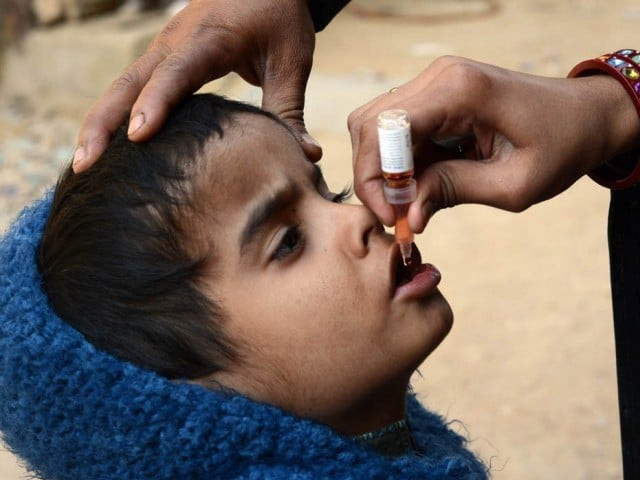‘IPV alone cannot eradicate poliovirus’
Experts argue merit of live versus inactivated virus for eradication.

PHOTO: AFP
After the health department introduced the use of the inactivated polio vaccine (IPV) in two districts, concerns about its efficacy were raised by various stakeholders. Experts maintain while the IPV is useful, the virus cannot be eradicated without the additional use of the oral polio vaccine (OPV). This argument has also been set forth by polio stakeholders, however, they push for the use of both vaccines.
Active vs inactive
“IPV costs higher than OPV and is used in foreign countries and they (foreign countries) don’t even know about OPV,” a health official told The Express Tribune on condition of anonymity as he was not authorized to talk to the media.
Officials involved in polio eradication said the IPV is only being used in children who have been administered at least two doses of OPV. They shared that IPV was used in countries where polio virus has already been eradicated.
The way the IPV works is it contains inactivated strains of all three poliovirus types and when administrated, it creates antibodies in the bloodstream and prevents the spread to the central nervous system. However, the circulation of the virus can still continue through human waste.
Even as health websites such as the WHO, polioeradication.org and immunize.org explain in length how the IPV is excellent in creating an immune response within the body, the “herd protection” properties of the OPV are widely accepted. The OPV carries a live attenuated—weakened—virus, and is essential for ending polio epidemics. In endemic countries, the OPV is faster to administer as it is oral, cheaper and allows for containment of the virus by providing high intestinal immunity, preventing the spread through faeces.
Vaccine-derived virus
Health officials shared there were a number of cases of vaccine-derived poliovirus due to OPV and ruled out any possibility of side-effects of the IPV. One official added IPV provided immunity against three types of the virus.
“Despite having been eradicated, there are still possibilities of emergence of [vaccine-derived] P2 type poliovirus and that is why IPV was launched to increase immunity of children against P2.”
Another health expert who has been part of polio eradication programmes in the past told The Express Tribune both vaccines are effective but the OPV can sometimes fail. When administered in an under-immunised population, the secretions of the OPV in the faeces can cause vaccine-derived polio. When this circulates, it can exchange genetic matter with other enteroviruses and strengthen.
“Both (vaccines) are equally effective but since IPV mixes with the blood, it increases immunity of a child against poliovirus and the one major difference between OPV and IPV is the method of using it,” said the expert. He added the OPV can be carried out by anyone but IPV, which is an injectable intra-muscular vaccine, requires trained staff.
On March 20, the K-P health department launched a special IPV campaign against poliovirus in districts Peshawar and Bannu, high-risk areas.
Published in The Express Tribune, March 26th, 2015.













COMMENTS
Comments are moderated and generally will be posted if they are on-topic and not abusive.
For more information, please see our Comments FAQ